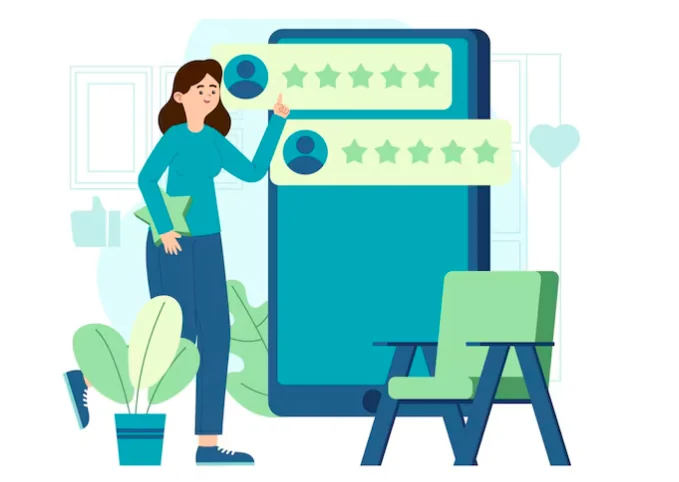Customer experience (CX) is at the heart of every successful business. It is not just about providing a service or selling a product but about how customers feel when interacting with your brand. A positive experience fosters loyalty, increases revenue, and distinguishes you from competitors. Customers have more choices than ever, with higher expectations. They expect seamless interactions, personalized service, and quick resolutions to their problems. Companies that fail to meet these expectations risk losing customers to competitors who offer a better experience. This article discusses eight (8) essential customer experience tasks that every business should prioritize.
What are customer experience tasks?
Customer experience tasks are the specific actions businesses take to improve customers’ overall experience with their brand. These tasks go beyond providing good customer service; they involve understanding customer needs, optimizing digital platforms, training employees, personalizing interactions, and ensuring every touchpoint in the customer journey is smooth and enjoyable. By consistently delivering excellent customer experiences, businesses can build trust, increase customer retention, and gain a competitive edge in their industry. Now, let’s explore the key CX tasks businesses should focus on.
8 key Customer Experience tasks that businesses should focus on
The eight (8) key customer experience tasks that businesses should focus on include:
1. Understand your customers
The foundation of a great customer experience is a deep understanding of your audience. Businesses must take time to learn about their customers’ preferences, pain points, and expectations.
- Use surveys and feedback forms to gather insights directly from customers.
- Analyze customer data and behavior to understand buying patterns and engagement levels.
- Develop buyer personas to categorize different customer segments and tailor services accordingly.
When businesses truly understand their customers, they can anticipate their needs, improve their products or services, and communicate in a way that resonates with them.
2. Optimize your website and digital channels
A company’s website and online presence are crucial to customer experience. A poorly designed website, slow loading times, or a complicated checkout process can frustrate customers and push them toward competitors.
- Ensure fast-loading web pages to reduce customer frustration.
- Create a mobile-friendly design so customers can easily access your site on smartphones and tablets.
- Streamline the checkout process to make transactions quick and hassle-free.
- Use clear navigation so customers can find what they need without confusion.
Since many customers first interact with a business online, providing a smooth and enjoyable digital experience can significantly impact customer satisfaction and conversion rates.
3. Train employees in customer service excellence
Your employees are the face of your brand, and their interactions with customers shape the overall experience.
- Teach employees active listening skills to understand customer concerns better.
- Encourage empathy and patience when handling complaints or questions.
- Provide training on company policies and products to ensure staff can assist customers confidently.
- Foster a customer-first mindset, where employees prioritize customer satisfaction in every interaction.
Well-trained employees create a welcoming and supportive environment that keeps customers coming back.
4. Provide multi-channel support
Customers expect businesses to be available on multiple communication platforms, including:
- Phone support for direct assistance.
- Email for detailed inquiries and support tickets.
- Live chat for quick responses on websites.
- Social media for real-time engagement and customer service.
A well-integrated support system ensures customers can reach your business through their preferred method. Additionally, businesses should provide consistent and seamless support across all these channels. Customers should not have to repeat their issues whenever they switch platforms.
5. Personalize customer interactions
Personalization makes customers feel valued and enhances their overall experience. Businesses can leverage customer data to create tailored experiences that strengthen relationships and boost satisfaction.
Ways to personalize customer interactions include:
- Addressing customers by name in emails and communications.
- Recommending products or services based on past purchases.
- Sending personalized offers and discounts.
- Remembering customer preferences and previous interactions to provide better service.
Personalization creates a sense of connection and helps customers feel that the business understands their needs, leading to higher engagement and loyalty.
6. Actively seek and implement feedback
Listening to customer feedback is one of the most effective ways to improve the customer experience. Businesses should actively encourage customers to share their thoughts through:
- Online reviews and testimonials to gauge satisfaction.
- Customer surveys to collect structured feedback.
- Social media interactions to track real-time sentiment.
However, gathering feedback is not enough; businesses should also take action. Customers feel valued and are more likely to remain loyal when their suggestions lead to real improvements. For example, if multiple customers complain about slow response times, a business can invest in additional support staff or automation tools to improve service efficiency.
7. Ensure a smooth post-purchase experience
The customer experience does not end once a purchase is made. Businesses that provide a seamless post-purchase experience increase the chances of repeat business and positive word-of-mouth marketing.
Key post-purchase tasks include:
- Clear return and refund policies to make the process hassle-free.
- Follow-up emails thanking customers and checking in on their satisfaction.
- Proactive customer support to assist with product setup or troubleshooting.
- Loyalty programs to encourage repeat purchases and reward customers.
By continuing to engage with customers after a sale, businesses create lasting relationships that lead to customer retention and referrals.
8. Monitor and improve customer experience metrics
To ensure continuous improvement, businesses should track customer experience metrics and make data-driven decisions. Some key CX metrics to monitor include:
- Net promoter score (NPS): Customer willingness to recommend your business.
- Customer satisfaction score (CSAT): Gauges customers’ happiness with a specific interaction.
- Customer effort score (CES): Evaluates how easy it is for customers to complete tasks like purchasing or getting support.
Businesses can identify pain points, improve weak areas, and enhance customer experience by analyzing these metrics.
Best practices for customer experience tasks
Delivering an exceptional customer experience (CX) requires businesses to be intentional and strategic. Simply having customer experience tasks in place is not enough; companies must implement best practices to ensure these tasks effectively improve customer satisfaction, loyalty, and business growth. Here are some key best practices to follow:
- Make customer experience a company-wide priority: Customer experience is not just the support team’s responsibility; it should be a core value embedded across all departments.
- Ensure leadership support for CX initiatives.
- Train all employees to prioritize customer satisfaction in their roles.
- Encourage cross-functional collaboration between marketing, sales, and customer service teams.
- Use customer data to personalize interactions: Customers appreciate businesses that understand their needs and preferences. Data-driven personalization helps improve engagement and customer loyalty.
- Collect and analyze customer behavior data to tailor recommendations.
- Use CRM tools to track interactions and preferences.
- Segment customers based on demographics, past purchases, and interests.
- Provide a seamless omnichannel Experience: Customers expect to interact with businesses through multiple channels, such as website, social media, phone, email, and in-person, without losing context.
- Ensure consistent branding and messaging across all platforms.
- Enable customers to switch channels smoothly without repeating information.
- Use integrated customer support tools to unify interactions across channels.
- Actively listen to customer feedback: Customer feedback is one of the most valuable tools for improving CX. Businesses should not only collect feedback but also act on it.
- Encourage customer reviews, surveys, and direct feedback.
- Monitor social media mentions and online reviews to gauge sentiment.
- Show customers that their input leads to fundamental changes.
- Optimize self-service options: Many customers prefer to find solutions independently before contacting support. A well-structured self-service system improves efficiency and reduces frustration.
- Develop a comprehensive knowledge base with FAQs and troubleshooting guides.
- Implement AI-powered chatbots for instant assistance.
- Ensure help content is easy to access and navigate.
- Continuously train and empower employees: Employees play a crucial role in shaping the customer experience. Well-trained and motivated employees provide better service and build stronger customer relationships.
- Provide ongoing customer service training.
- Equip employees with the right tools to handle inquiries efficiently.
- Empower frontline staff to make decisions that enhance CX.
- Proactively address customer issues: Businesses should anticipate and resolve potential problems before they escalate instead of waiting for complaints.
- Monitor customer behavior and engagement to identify pain points.
- Use predictive analytics to detect common issues and take preventive action.
- Follow up with customers to ensure their concerns are fully resolved.
- Measure and improve customer experience metrics: Tracking key CX metrics helps businesses identify strengths and areas for improvement.
- Measure net promoter score (NPS) to gauge customer loyalty.
- Analyze customer satisfaction score (CSAT) to assess service quality.
- Monitor customer effort score (CES) to evaluate ease of interaction.
The power of exceptional customer experience
Providing an outstanding customer experience requires more than good service; it demands a proactive approach to understanding customers, optimizing digital platforms, training employees, and continuously improving interactions. By prioritizing these eight essential CX tasks, businesses can build strong customer relationships, increase retention, and differentiate themselves from competitors. A satisfied customer will likely return and recommend your brand to others, driving long-term success. Investing in customer experience is not just good practice; it is a competitive advantage that ensures business growth in today’s customer-centric world.





